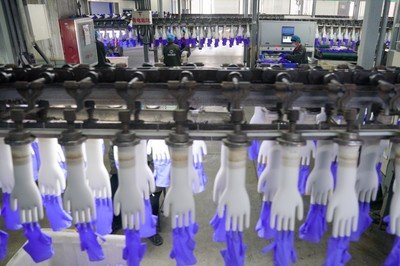
The nitrile glove market is volatile and highly competitive. Facing intense price competition, manufacturers must continuously seek new solutions to maintain their market share. Below are several cost-reduction strategies provided by Fengwang.
1. Optimize Production Equipment and Technology
Automated Ingredient System: Compared to traditional methods, it precisely controls raw material usage, minimizing waste while ensuring accurate formulation, thereby reducing costs caused by quality issues.
2. Streamline Production Processes
Introduce early-stage inspections, such as visual detection systems, to identify and separate defective gloves promptly, reducing waste.
3. Enhance Process Monitoring & Quality Control
Install real-time monitoring devices to track key parameters (temperature, humidity, chlorine/sulfur content, etc.) and adjust them immediately to improve product quality.
Example: Hand Mold Cleaning Process
(1) Brush tank temperature should be maintained at 45±15°C.
(2) Cleaning water must be refreshed every 8 hours to ensure cleanliness.
(3) Regularly inspect the brush for wear to ensure effective cleaning.
(4) Avoid oil contamination on cleaning brushes.
4. Energy Savings
Use energy-efficient equipment (e.g., recirculating heating ovens) to cut energy consumption.
Optimize workshop layout to minimize energy loss during transmission.

5. Selecting the Right Raw Material Suppliers
(1) Choose legally compliant, reputable suppliers to ensure material quality and stability.
(2) Require suppliers to provide detailed quality reports (purity, performance metrics, etc.).
(3) Analyze procurement costs—prefer nearby suppliers to reduce logistics and storage expenses.
(4) Opt for suppliers with strong after-sales support, including prompt issue resolution and return policies.



